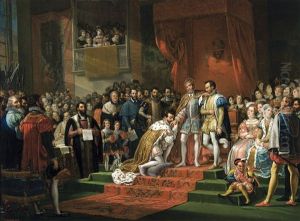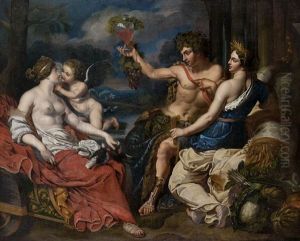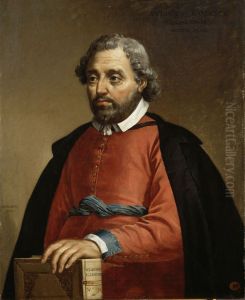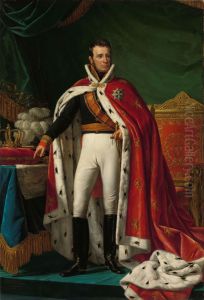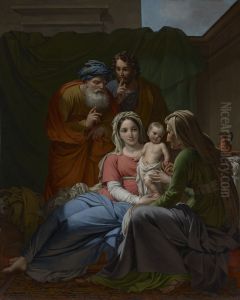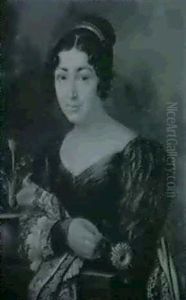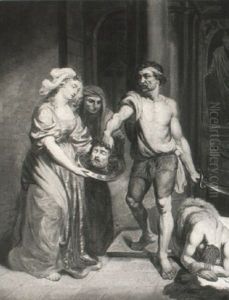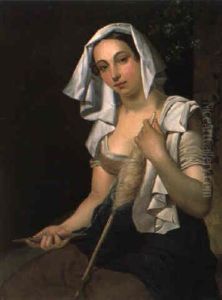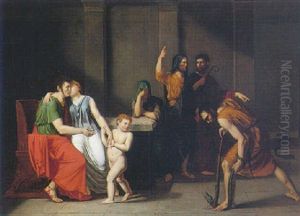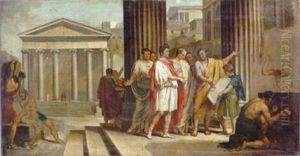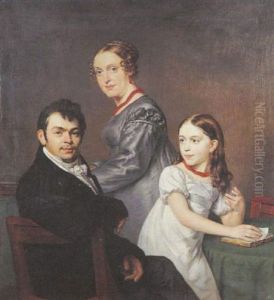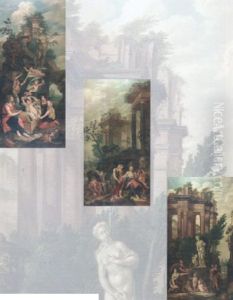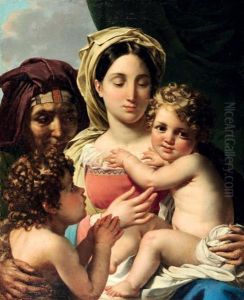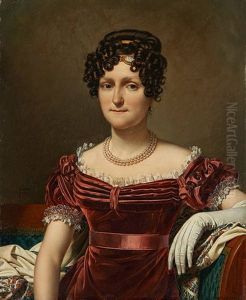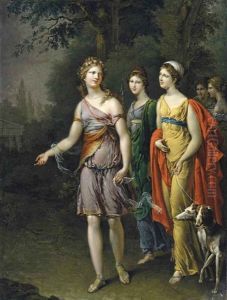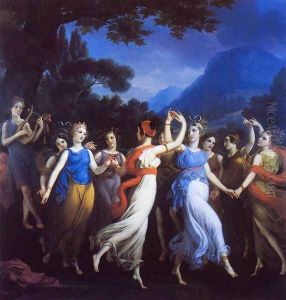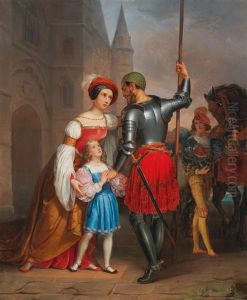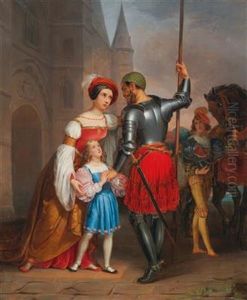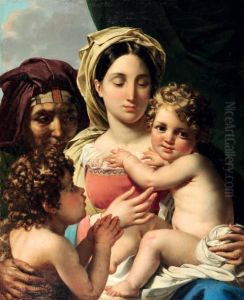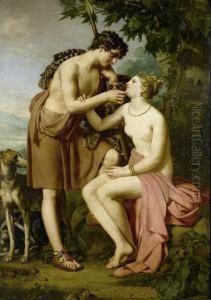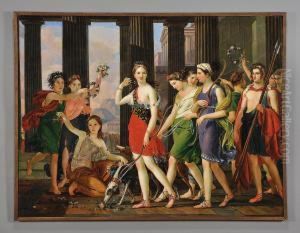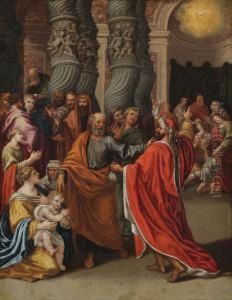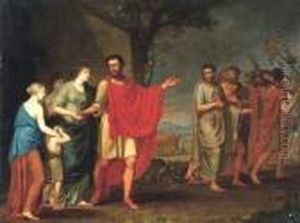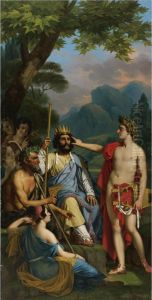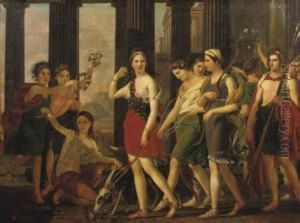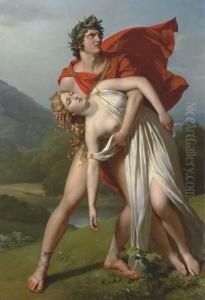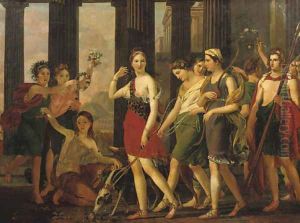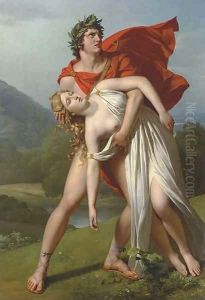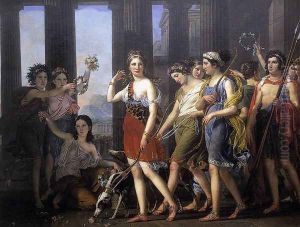Joseph Paelinck Paintings
Joseph Paelinck was a Belgian painter born on March 20, 1781, in Oosterzele. He studied art at the Royal Academy of Fine Arts in Antwerp and later in Paris under the tutelage of Jacques-Louis David, the leading French painter of the Neoclassical style. Paelinck's works reflect the influence of his teacher and the Neoclassical movement, which sought to revive the ideals of ancient Greek and Roman art.
During his career, Paelinck produced a variety of works, including historical paintings, portraits, and religious scenes. His painting style was characterized by its detailed and polished finish, clarity of form, and serene composition, which was typical of Neoclassicism. He gained recognition and success through his historical paintings which often depicted scenes from antiquity with an emphasis on moral virtue and stoicism.
In 1817, Paelinck was appointed as a professor at the Royal Academy of Fine Arts in Brussels, a role he held until his death. As an educator, he influenced a generation of Belgian artists and contributed to the development of the arts in Belgium. Paelinck's works were exhibited in various salons, and he received commissions from notable figures of his time, including members of the Belgian royal family.
Joseph Paelinck's dedication to the Neoclassical style remained consistent throughout his career, even as Romanticism became the dominant artistic movement in Europe. His adherence to Neoclassicism reflected his belief in the enduring values of classical art. Paelinck passed away on June 19, 1839, in Schaerbeek, leaving behind a legacy that captures the essence of Neoclassical painting in the early 19th century.
